2SA1943 PNP Transistor: Datasheet, Price and Equivalent
Toshiba Semiconductor and Storage
In a Tube of 100, Toshiba 2SA1943-O(Q) PNP Transistor, 15 A, 230 V, 3-Pin TO-3PL









In a Tube of 100, Toshiba 2SA1943-O(Q) PNP Transistor, 15 A, 230 V, 3-Pin TO-3PL
The 2SA1943 is a high power PNP transistor originally from Toshiba. This article will unlock more details about 2SA1943, and more, there is a huge range of Semiconductors, Capacitors, Resistors and ICs in stock. Welcome RFQ.

DIY Powerful Ultra Bass Audio Amplifier Using 2SC5200 and 2SA1943 / Output Capacitors
2SA1943 Pinout

2SA1943 Pinout
| Pin Number | Pin Name | Pin Description |
| 1 | Base | Controls the biasing of the transistor, Used to turn ON or OFF the transistor |
| 2 | Collector | Current flows in through collector, normally connected to load |
| 3 | Emitter | Current Drains out through emitter, normally connected to ground |
Pin Description
2SA1943 CAD Model
Symbol
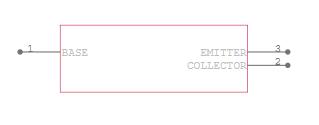
2SA1943 Symbol
Footprint

2SA1943 Footprint
3D Model
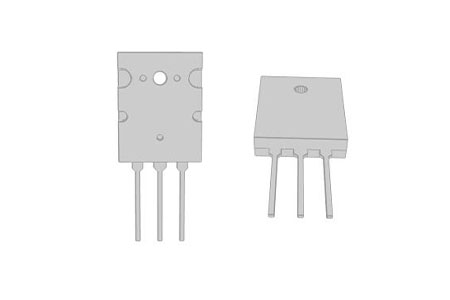
2SA1943 3D Model
2SA1943 Description
The 2SA1943 is a Toshiba-designed high-power PNP transistor. It is frequently employed in high-power audio circuits or AF amplifiers due to its high current gain and collector current.
Specifications
- TypeParameter
- Factory Lead Time12 Weeks
- Contact Plating
Contact plating (finish) provides corrosion protection for base metals and optimizes the mechanical and electrical properties of the contact interfaces.
Copper, Silver, Tin - Mount
In electronic components, the term "Mount" typically refers to the method or process of physically attaching or fixing a component onto a circuit board or other electronic device. This can involve soldering, adhesive bonding, or other techniques to secure the component in place. The mounting process is crucial for ensuring proper electrical connections and mechanical stability within the electronic system. Different components may have specific mounting requirements based on their size, shape, and function, and manufacturers provide guidelines for proper mounting procedures to ensure optimal performance and reliability of the electronic device.
Through Hole - Mounting Type
The "Mounting Type" in electronic components refers to the method used to attach or connect a component to a circuit board or other substrate, such as through-hole, surface-mount, or panel mount.
Through Hole - Package / Case
refers to the protective housing that encases an electronic component, providing mechanical support, electrical connections, and thermal management.
TO-3PL - Number of Pins3
- Collector-Emitter Breakdown Voltage230V
- Collector-Emitter Saturation Voltage-3V
- Number of Elements1
- hFEMin80
- Operating Temperature
The operating temperature is the range of ambient temperature within which a power supply, or any other electrical equipment, operate in. This ranges from a minimum operating temperature, to a peak or maximum operating temperature, outside which, the power supply may fail.
150°C TJ - Packaging
Semiconductor package is a carrier / shell used to contain and cover one or more semiconductor components or integrated circuits. The material of the shell can be metal, plastic, glass or ceramic.
Tube - Published2000
- Part Status
Parts can have many statuses as they progress through the configuration, analysis, review, and approval stages.
Active - Moisture Sensitivity Level (MSL)
Moisture Sensitivity Level (MSL) is a standardized rating that indicates the susceptibility of electronic components, particularly semiconductors, to moisture-induced damage during storage and the soldering process, defining the allowable exposure time to ambient conditions before they require special handling or baking to prevent failures
Not Applicable - Voltage - Rated DC
Voltage - Rated DC is a parameter that specifies the maximum direct current (DC) voltage that an electronic component can safely handle without being damaged. This rating is crucial for ensuring the proper functioning and longevity of the component in a circuit. Exceeding the rated DC voltage can lead to overheating, breakdown, or even permanent damage to the component. It is important to carefully consider this parameter when designing or selecting components for a circuit to prevent any potential issues related to voltage overload.
-230V - Max Power Dissipation
The maximum power that the MOSFET can dissipate continuously under the specified thermal conditions.
150W - Current Rating
Current rating is the maximum current that a fuse will carry for an indefinite period without too much deterioration of the fuse element.
-15A - Frequency
In electronic components, the parameter "Frequency" refers to the rate at which a signal oscillates or cycles within a given period of time. It is typically measured in Hertz (Hz) and represents how many times a signal completes a full cycle in one second. Frequency is a crucial aspect in electronic components as it determines the behavior and performance of various devices such as oscillators, filters, and communication systems. Understanding the frequency characteristics of components is essential for designing and analyzing electronic circuits to ensure proper functionality and compatibility with other components in a system.
30MHz - Base Part Number
The "Base Part Number" (BPN) in electronic components serves a similar purpose to the "Base Product Number." It refers to the primary identifier for a component that captures the essential characteristics shared by a group of similar components. The BPN provides a fundamental way to reference a family or series of components without specifying all the variations and specific details.
2SA1943 - Element Configuration
The distribution of electrons of an atom or molecule (or other physical structure) in atomic or molecular orbitals.
Single - Power Dissipation
the process by which an electronic or electrical device produces heat (energy loss or waste) as an undesirable derivative of its primary action.
150W - Gain Bandwidth Product
The gain–bandwidth product (designated as GBWP, GBW, GBP, or GB) for an amplifier is the product of the amplifier's bandwidth and the gain at which the bandwidth is measured.
30MHz - Transistor Type
Transistor type refers to the classification of transistors based on their operation and construction. The two primary types are bipolar junction transistors (BJTs) and field-effect transistors (FETs). BJTs use current to control the flow of current, while FETs utilize voltage to control current flow. Each type has its own subtypes, such as NPN and PNP for BJTs, and MOSFETs and JFETs for FETs, impacting their applications and characteristics in electronic circuits.
PNP - Collector Emitter Voltage (VCEO)
Collector-Emitter Voltage (VCEO) is a key parameter in electronic components, particularly in transistors. It refers to the maximum voltage that can be applied between the collector and emitter terminals of a transistor while the base terminal is open or not conducting. Exceeding this voltage limit can lead to breakdown and potential damage to the transistor. VCEO is crucial for ensuring the safe and reliable operation of the transistor within its specified limits. Designers must carefully consider VCEO when selecting transistors for a circuit to prevent overvoltage conditions that could compromise the performance and longevity of the component.
230V - Max Collector Current
Max Collector Current is a parameter used to specify the maximum amount of current that can safely flow through the collector terminal of a transistor or other electronic component without causing damage. It is typically expressed in units of amperes (A) and is an important consideration when designing circuits to ensure that the component operates within its safe operating limits. Exceeding the specified max collector current can lead to overheating, degradation of performance, or even permanent damage to the component. Designers must carefully consider this parameter when selecting components and designing circuits to ensure reliable and safe operation.
15A - DC Current Gain (hFE) (Min) @ Ic, Vce
The parameter "DC Current Gain (hFE) (Min) @ Ic, Vce" in electronic components refers to the minimum value of the DC current gain, denoted as hFE, under specific operating conditions of collector current (Ic) and collector-emitter voltage (Vce). The DC current gain hFE represents the ratio of the collector current to the base current in a bipolar junction transistor (BJT), indicating the amplification capability of the transistor. The minimum hFE value at a given Ic and Vce helps determine the transistor's performance and efficiency in amplifying signals within a circuit. Designers use this parameter to ensure proper transistor selection and performance in various electronic applications.
80 @ 1A 5V - Current - Collector Cutoff (Max)
The parameter "Current - Collector Cutoff (Max)" refers to the maximum current at which a transistor or other electronic component will cease to conduct current between the collector and emitter terminals. This parameter is important in determining the maximum current that can flow through the component when it is in the cutoff state. Exceeding this maximum cutoff current can lead to malfunction or damage of the component. It is typically specified in the component's datasheet and is crucial for proper circuit design and operation.
5μA ICBO - Vce Saturation (Max) @ Ib, Ic
The parameter "Vce Saturation (Max) @ Ib, Ic" in electronic components refers to the maximum voltage drop across the collector-emitter junction when the transistor is in saturation mode. This parameter is specified at a certain base current (Ib) and collector current (Ic) levels. It indicates the minimum voltage required to keep the transistor fully conducting in saturation mode, ensuring that the transistor operates efficiently and does not enter the cutoff region. Designers use this parameter to ensure proper transistor operation and to prevent overheating or damage to the component.
3V @ 800mA, 8A - Collector Base Voltage (VCBO)
Collector Base Voltage (VCBO) is the maximum allowable voltage that can be applied between the collector and base terminals of a bipolar junction transistor when the emitter is open. It is a critical parameter that determines the voltage rating of the transistor and helps prevent breakdown in the collector-base junction. Exceeding this voltage can lead to permanent damage or failure of the component.
230V - Emitter Base Voltage (VEBO)
Emitter Base Voltage (VEBO) is a parameter used in electronic components, particularly in transistors. It refers to the maximum voltage that can be applied between the emitter and base terminals of a transistor without causing damage to the device. Exceeding this voltage limit can lead to breakdown of the transistor and potential failure. VEBO is an important specification to consider when designing circuits to ensure the proper operation and reliability of the components. It is typically provided in the datasheet of the transistor and should be carefully observed to prevent any potential damage during operation.
5V - Height26mm
- Length20.5mm
- Width5.2mm
- Radiation Hardening
Radiation hardening is the process of making electronic components and circuits resistant to damage or malfunction caused by high levels of ionizing radiation, especially for environments in outer space (especially beyond the low Earth orbit), around nuclear reactors and particle accelerators, or during nuclear accidents or nuclear warfare.
No - RoHS Status
RoHS means “Restriction of Certain Hazardous Substances” in the “Hazardous Substances Directive” in electrical and electronic equipment.
RoHS Compliant - Lead Free
Lead Free is a term used to describe electronic components that do not contain lead as part of their composition. Lead is a toxic material that can have harmful effects on human health and the environment, so the electronics industry has been moving towards lead-free components to reduce these risks. Lead-free components are typically made using alternative materials such as silver, copper, and tin. Manufacturers must comply with regulations such as the Restriction of Hazardous Substances (RoHS) directive to ensure that their products are lead-free and environmentally friendly.
Lead Free
Parts with Similar Specs
- ImagePart NumberManufacturerMountPackage / CaseCollector Emitter Breakdown VoltageMax Collector CurrentCollector Emitter Saturation VoltagehFE MinMax Power DissipationPower DissipationView Compare
2SA1943-O(Q)
Through Hole
TO-3PL
230 V
15 A
-3 V
80
150 W
150 W
Through Hole
TO-247-3
260 V
15 A
-
75
150 W
150 W
Through Hole
TO-3PL
230 V
15 A
-3 V
80
150 W
150 W
Through Hole
TO-3PL
230 V
15 A
3 V
-
180 W
180 W
Through Hole
TO-3P-3, SC-65-3
230 V
15 A
-1.5 V
55
130 W
130 W
2SA1943 Features
High-power PNP Transistor
DC Current Gain (hFE) 55 to 160
Continuous Collector current (IC) is 15A
Collector-Emitter voltage (VCE) is 230 V
Collector-Base voltage (VCB) is 230V
Emitter Base Voltage (VBE) is 5V
Available in To-264 Package
2SA1943 Application
Audio frequency Amplifier
AF /RF circuits
Low Slew rate devices
Push-Pull configuration circuits
high current switching (up to 15A) loads
Can be used as medium Power switches
2SA1943 Equivalent
The Equivalent for 2SA1943: TTA1943
Same Family Transistors
TTC5200, TTA1943, 2SC5200N, 2SA1943N.
How to use 2SA1943
The 2SA1943 is mostly employed in amplifier circuits. The majority of amplifiers use a push-pull circuit similar to that of a Class B amplifier, which requires both an NPN and a PNP transistor. The 2SA1943 is a PNP transistor that also has an NPN counterpart, the 2SE5200. Both of these transistors are frequently combined in the design of high-power amplifiers.
Transistors heat up quickly due to their high switching frequency and collector current, hence they are always used in conjunction with a heat sink. It's worth noting that the heat sink will also serve as the transistor's collector pin, thus it should be separated from the rest of the circuit.
These transistors are often used in stereo systems rated at 200W or more, and they have a sensitivity of 0.75Vrms and can respond to frequencies ranging from 5Hz to 100kHz. It is useful for audio applications since it has a low signal-to-noise ratio and low total harmonic distortion.
Datasheet PDF
- Datasheets :
Popularity by Region
What is 2SA1943?
The 2SA1943 is a high power PNP transistor originally from Toshiba. Due to its high current gain and collector current, it is very commonly used in High power audio circuits or AF amplifiers.
What is the relationship between 2SC5200 and 2SA1943?
The 2SC5200 is a high power NPN Transistor with a collector to emitter voltage of 230V and a collector current of 30A. And 2SA1943 is complementary to 2SC5200.
What package is 2SA1943 available in?
It is available in a To-264 Package.
What is the output voltage of 2sa1943 power amplifier?
2SA1943 TOSHIBA Transistor Silicon PNP Triple Diffused Type 2SA1943 Power Amplifier Applications Unit: mm High collector voltage: VCEO = -230 V (min) Complementary to 2SC5200 Recommended for 100-W high-fidelity audio frequency amplifier output stage.
What is the breakdown voltage of RoHS 2sa1943bl?
RoHS 2SA1943BL Series RoHS SEMICONDUCTORNell High Power ProductsSilicon PNP triple diffusion planar transistor-15A/-230V/150W5.0020.000.2018.003.300.20TO-3PLFEATURESHigh breakdown voltage, VCEO = -230V (min) Complementary to 2SC5200BL0.603.20TO-3PL package which can be installed to the 5.450.05 5.450.05heat sink with one screw1 2 3 APPLICATIONSS
 A Comprehensive Guide to LTC6702HDC#TRMPBF Linear Comparator
A Comprehensive Guide to LTC6702HDC#TRMPBF Linear Comparator06 March 2024125
 LM324N Operational Amplifiers: Pinout, Datasheet and Features
LM324N Operational Amplifiers: Pinout, Datasheet and Features05 July 202119986
 A Comprehensive Guide to Intel RealSense 82635DSITR50P Linear Video Processing Chip
A Comprehensive Guide to Intel RealSense 82635DSITR50P Linear Video Processing Chip11 March 2024393
 Best Practices for Yageo RC0402FR-070RL Zero Ohm Use
Best Practices for Yageo RC0402FR-070RL Zero Ohm Use20 August 2025330
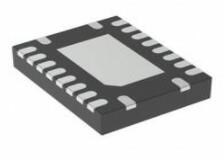 LM5145RGYR DC/DC Controller: 75-V, Datasheet, Application Circuit
LM5145RGYR DC/DC Controller: 75-V, Datasheet, Application Circuit08 April 20221700
 OP15GH J-FET Amplifier
OP15GH J-FET Amplifier06 March 2024391
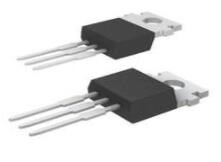 LM340T-5.0 Voltage Regulator: LM340T-5.0 Pinout, Application and Circuit
LM340T-5.0 Voltage Regulator: LM340T-5.0 Pinout, Application and Circuit30 March 20222992
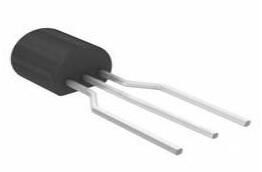 J113 N-Channel Switch: J113 Transistor Equivalents and Datasheet
J113 N-Channel Switch: J113 Transistor Equivalents and Datasheet26 March 20225156
![PMIC: Basic Types and Applications [Video]](https://res.utmel.com/Images/Article/596928b4-5505-4751-b95b-54949cc0bf7b.jpg) PMIC: Basic Types and Applications [Video]
PMIC: Basic Types and Applications [Video]27 October 20204490
 FPGA: A Highly Customised Type of Chip Based on Digital Circuits
FPGA: A Highly Customised Type of Chip Based on Digital Circuits22 February 20233014
 How to Choose the Best Deep Cycle Battery in 2024 | Reviews and Buying Guide
How to Choose the Best Deep Cycle Battery in 2024 | Reviews and Buying Guide21 July 20252327
 50 Frequently Asked Questions about Oscilloscope
50 Frequently Asked Questions about Oscilloscope22 November 202110117
 What is Smoke Detector?
What is Smoke Detector?26 October 20213346
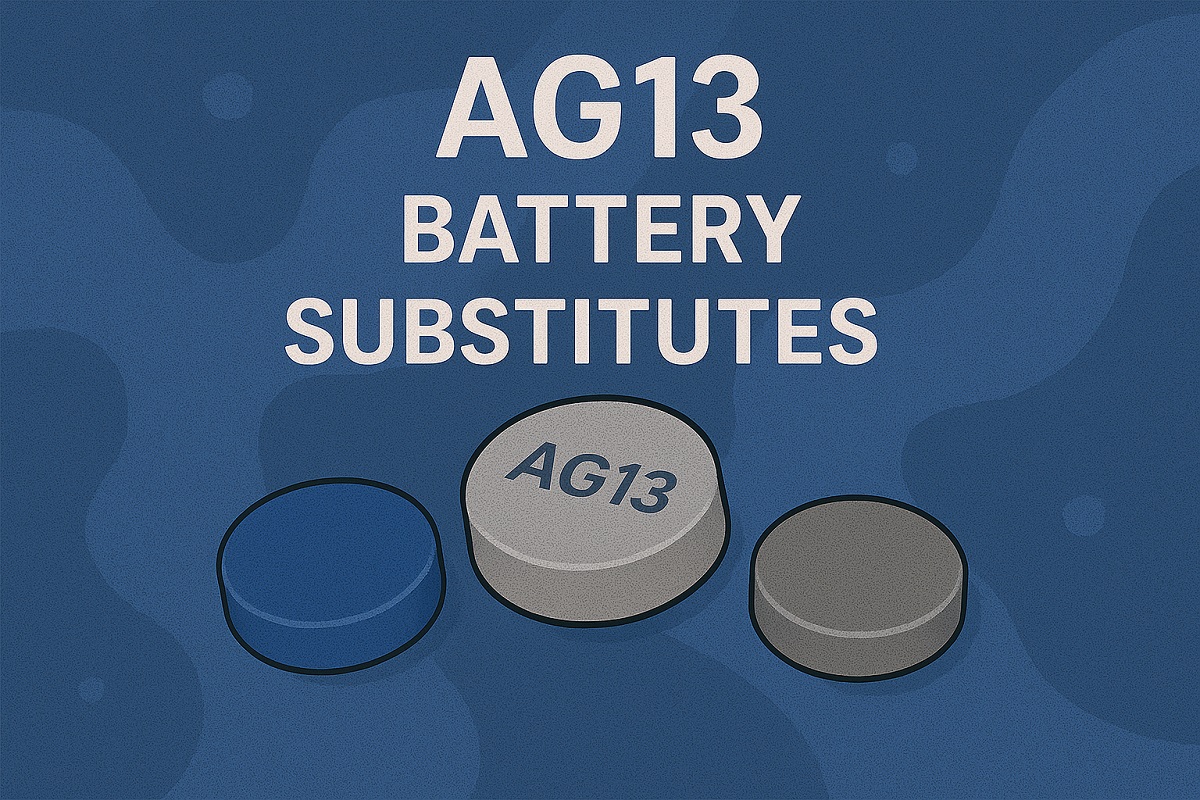 A Guide to the Best AG13 Battery Substitutes
A Guide to the Best AG13 Battery Substitutes27 May 2025922
 What is a 18650 Lithium Battery?
What is a 18650 Lithium Battery?15 December 20217851
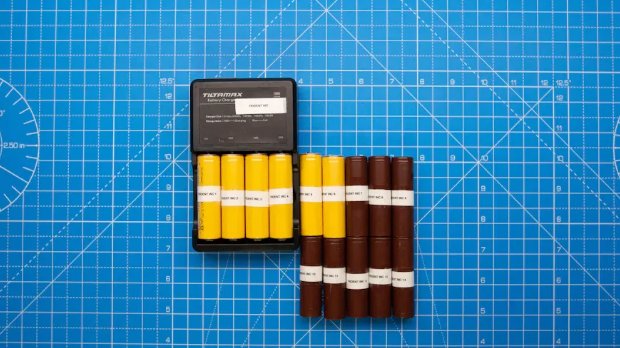 cr2450 vs cr2032 what to know before replacing
cr2450 vs cr2032 what to know before replacing20 August 2025859
Toshiba Semiconductor and Storage
In Stock: 19800
United States
China
Canada
Japan
Russia
Germany
United Kingdom
Singapore
Italy
Hong Kong(China)
Taiwan(China)
France
Korea
Mexico
Netherlands
Malaysia
Austria
Spain
Switzerland
Poland
Thailand
Vietnam
India
United Arab Emirates
Afghanistan
Åland Islands
Albania
Algeria
American Samoa
Andorra
Angola
Anguilla
Antigua & Barbuda
Argentina
Armenia
Aruba
Australia
Azerbaijan
Bahamas
Bahrain
Bangladesh
Barbados
Belarus
Belgium
Belize
Benin
Bermuda
Bhutan
Bolivia
Bonaire, Sint Eustatius and Saba
Bosnia & Herzegovina
Botswana
Brazil
British Indian Ocean Territory
British Virgin Islands
Brunei
Bulgaria
Burkina Faso
Burundi
Cabo Verde
Cambodia
Cameroon
Cayman Islands
Central African Republic
Chad
Chile
Christmas Island
Cocos (Keeling) Islands
Colombia
Comoros
Congo
Congo (DRC)
Cook Islands
Costa Rica
Côte d’Ivoire
Croatia
Cuba
Curaçao
Cyprus
Czechia
Denmark
Djibouti
Dominica
Dominican Republic
Ecuador
Egypt
El Salvador
Equatorial Guinea
Eritrea
Estonia
Eswatini
Ethiopia
Falkland Islands
Faroe Islands
Fiji
Finland
French Guiana
French Polynesia
Gabon
Gambia
Georgia
Ghana
Gibraltar
Greece
Greenland
Grenada
Guadeloupe
Guam
Guatemala
Guernsey
Guinea
Guinea-Bissau
Guyana
Haiti
Honduras
Hungary
Iceland
Indonesia
Iran
Iraq
Ireland
Isle of Man
Israel
Jamaica
Jersey
Jordan
Kazakhstan
Kenya
Kiribati
Kosovo
Kuwait
Kyrgyzstan
Laos
Latvia
Lebanon
Lesotho
Liberia
Libya
Liechtenstein
Lithuania
Luxembourg
Macao(China)
Madagascar
Malawi
Maldives
Mali
Malta
Marshall Islands
Martinique
Mauritania
Mauritius
Mayotte
Micronesia
Moldova
Monaco
Mongolia
Montenegro
Montserrat
Morocco
Mozambique
Myanmar
Namibia
Nauru
Nepal
New Caledonia
New Zealand
Nicaragua
Niger
Nigeria
Niue
Norfolk Island
North Korea
North Macedonia
Northern Mariana Islands
Norway
Oman
Pakistan
Palau
Palestinian Authority
Panama
Papua New Guinea
Paraguay
Peru
Philippines
Pitcairn Islands
Portugal
Puerto Rico
Qatar
Réunion
Romania
Rwanda
Samoa
San Marino
São Tomé & Príncipe
Saudi Arabia
Senegal
Serbia
Seychelles
Sierra Leone
Sint Maarten
Slovakia
Slovenia
Solomon Islands
Somalia
South Africa
South Sudan
Sri Lanka
St Helena, Ascension, Tristan da Cunha
St. Barthélemy
St. Kitts & Nevis
St. Lucia
St. Martin
St. Pierre & Miquelon
St. Vincent & Grenadines
Sudan
Suriname
Svalbard & Jan Mayen
Sweden
Syria
Tajikistan
Tanzania
Timor-Leste
Togo
Tokelau
Tonga
Trinidad & Tobago
Tunisia
Turkey
Turkmenistan
Turks & Caicos Islands
Tuvalu
U.S. Outlying Islands
U.S. Virgin Islands
Uganda
Ukraine
Uruguay
Uzbekistan
Vanuatu
Vatican City
Venezuela
Wallis & Futuna
Yemen
Zambia
Zimbabwe



